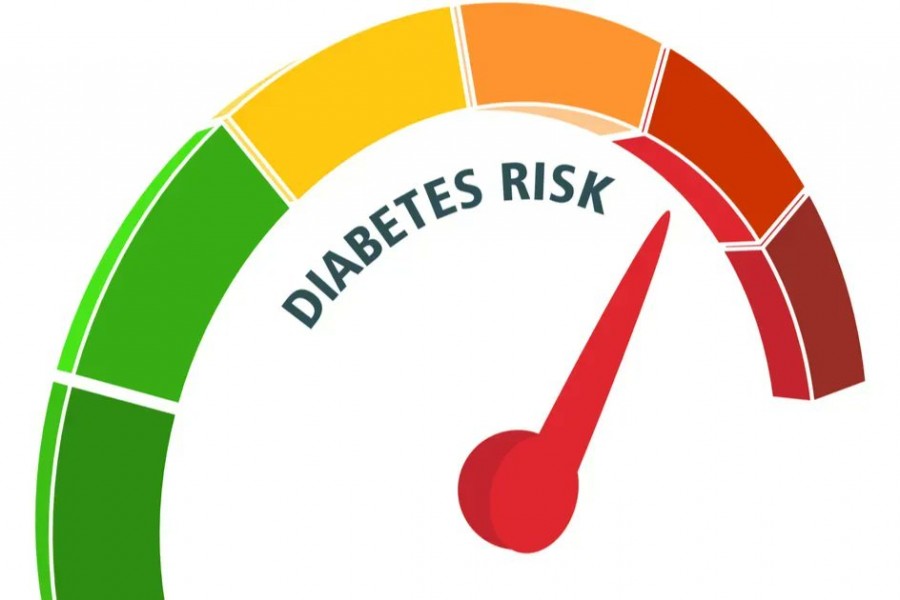Event: Pre-Diabetes: What is it? What to do About it? Webinar
National Diabetes Month - 2024
Diabetes is a disease that occurs when your blood glucose, also called blood sugar, is too high. Over time, having too much glucose in your blood can cause other health problems such as heart disease, nerve damage, eye problems, and kidney disease. You can take steps to prevent or manage diabetes.
According to the Centers for Disease Control and Prevention’s National Diabetes Statistics Report, an estimated 38.4 million people in the United States, or 11.6% of the population, have diabetes. About 1 in 5 adults with diabetes don’t know they have the disease. An estimated 97.6 million American adults have prediabetes, which means their blood glucose levels are higher than normal but not high enough to be diagnosed as diabetes.
·The most common types of diabetes are Type 1, Type 2, and Gestational diabetes…
Type 1 diabetes
If you have Type 1 diabetes, your body makes little or no insulin. Your immune system attacks and destroys the cells in your pancreas that make insulin. Type 1 diabetes is usually diagnosed in children and young adults, although it can appear at any age. People with type 1 diabetes need to take insulin every day to stay alive.
Type 2 diabetes
If you have Type 2 diabetes, the cells in your body do not use insulin properly. The pancreas may be making insulin but is not making enough insulin to keep your blood glucose level in the normal range. Type 2 diabetes is the most common type of diabetes. You are more likely to develop Type 2 diabetes if you have risk factors, such as overweight or obesity, and a family history of the disease. You can develop Type 2 diabetes at any age.
Gestational diabetes
Gestational diabetes is a type of diabetes that develops during pregnancy. Most of the time, this type of diabetes goes away after the baby is born. However, if you’ve had gestational diabetes, you have a higher chance of developing Type 2 diabetes later in life. Sometimes diabetes diagnosed during pregnancy is Type 2 diabetes
·Symptoms of Diabetes Include…
Increased thirst and urination
Increased hunger
Fatigue
Blurred vision
Numbness or tingling in the feet or hands
Sores that do not heal
Unexplained weight loss
Symptoms of Type 1 diabetes can start quickly, in a matter of weeks. Symptoms of Type 2 diabetes often develop slowly—over the course of several years—and can be so mild that you might not even notice them. Many people with Type 2 diabetes have no symptoms. Some people do not find out they have the disease until they have diabetes-related health problems, such as blurred vision or heart trouble.
·You can develop type 2 diabetes at any age. You are more likely to develop type 2 diabetes if you…
Are overweight or obese.
Are age 35 or older. The risk increases as a person gets older.
Have a family history of diabetes.
Are African American, American Indian, Asian American, Hispanic/Latino, or Pacific Islander.
Are not physically active, because of physical limitations, a sedentary lifestyle, or a job that requires sitting for long periods of time.
Have prediabetes.
Have a history of gestational diabetes, or gave birth to a baby weighing 9 pounds or more.
·Does your weight put you at risk for type 2 diabetes?
If you are overweight or have obesity, you may be able to prevent or delay Type 2 diabetes by losing weight and being more physically active.
To see if your weight may put you at risk for Type 2 diabetes, learn your body mass index (BMI) and waist circumference.
Body mass index
Your BMI can help you tell if you are at a healthy weight or overweight or have obesity.
Most adults with a BMI of 25 or higher are overweight and have a higher risk of developing Type 2 diabetes. Asian Americans are overweight if their BMI is 23 or higher,while Pacific Islanders are overweight if their BMI is 26 or higher.
If you are age 20 or older, use the BMI calculator for adults to learn your body mass index.
Waist circumference
Another way to estimate your risk of developing diabetes is to measure your waist circumference. Men have a higher risk of developing diabetes if their waist circumference is more than 40 inches, while women who are not pregnant have a higher risk if their waist circumference is more than 35 inches.
Waist circumference is an indirect measurement of the amount of fat in your abdomen. Having a large waist circumference is a risk factor for diabetes and heart disease, even if you have a normal BMI.
·How can I lower my chances of developing Type 2 diabetes?
Research shows that you can do a lot to reduce your chances of developing Type 2 diabetes. Here are some things you can change to lower your risk:
Lose weight and keep it off -You may be able to prevent or delay diabetes by losing 5 to 7 percent of your starting weight.1 For instance, if you weigh 200 pounds, your goal would be to lose about 10 to 14 pounds.
Move more- Get at least 30 minutes of physical activity 5 days a week. If you have not been active, talk with your health care professional about which activities are best. Start slowly to build up to your goal.
Eat healthy foods most of the time-Eat smaller portions to reduce the number of calories you eat each day and help you lose weight. Choosing foods with less fat is another way to reduce calories. Drink water instead of sweetened beverages.
Ask your health care professional about what other changes you can make to prevent or delay Type 2 diabetes.
Most often, your best chance for preventing Type 2 diabetes is to make lifestyle changes that work for you long term.

